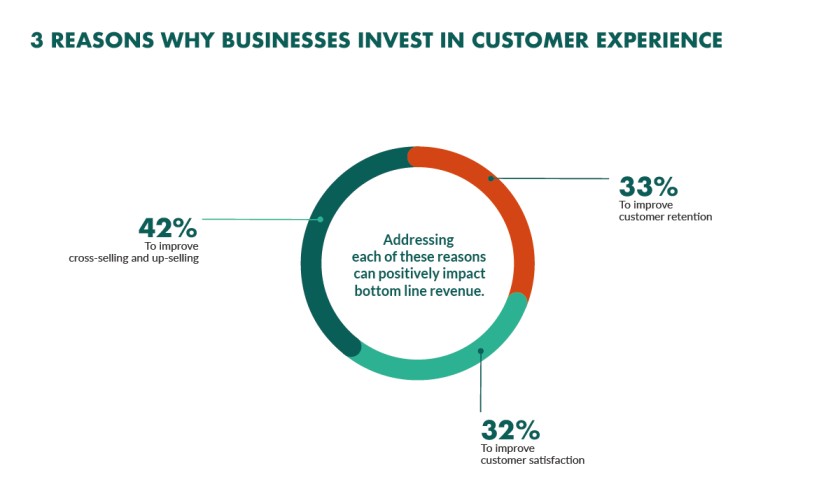11 Common Digital Marketing Mistakes To Avoid
These are the 11 digital marketing mistakes most businesses make. Are you sinking money into any of them?
Find out and learn how to fix them.

11 Most Common Digital Marketing Mistakes To Avoid & How To Fix Them
In this section, we look at the most common digital marketing mistakes, segmenting them into two categories:
-
-
-
- Strategy-related
- Approach to content creation
-
-
Each section will offer actionable tips on remedying the issues to optimize your efforts and return on investment.
Top Marketing Strategy Mistakes + Solutions
Here is the list of the top 10 marketing mistakes to avoid and pro tips on how to deal with them.
1. Doing Anything Without Clearly Defined Audiences
In digital marketing, not having a clearly defined target audience is one of the biggest and most costly mistakes. Here’s a focused explanation:
-
What Does It Mean?
It means launching marketing campaigns (ads, emails, content, SEO, etc.) without knowing exactly who you’re trying to reach — their:
- Age
- Interests
- Behavior
- Location
- Pain points
- Goals
2. Why It Fails in Digital Marketing ?
- Wasted Budget on Ads:
If you don’t define your audience, ad platforms (Google, Facebook, Instagram, etc.) show your ads to the wrong people — leading to low conversions and high costs. - Low Engagement on Content:
Blog posts, videos, or social media posts made for “everyone” usually connect with no one. - Ineffective SEO Strategy:
Targeting broad or irrelevant keywords won’t attract your ideal visitors — traffic ≠ conversions. - Poor Email Marketing Results:
Without segmentation, your emails feel irrelevant — leading to low open rates and unsubscribes. - No Brand Loyalty or Trust:
People only follow or buy from brands that “get them.” A generic message won’t create a connection.
How to Fix It: Define Your Audience
Create detailed buyer personas that include:
- Demographics: Age, gender, income, job title
- Psychographics: Values, lifestyle, challenges
- Online behavior: Where they spend time (Instagram, YouTube, LinkedIn), what content they consume
Example:
Without Clear Audience:
Our skincare product is great for everyone!
With Defined Audience:
Our vitamin C serum is perfect for 25–35-year-old women with sensitive skin who want a natural glow without harsh chemicals.
Bottom Line
In digital marketing, success begins with knowing who you’re speaking to.
Define your audience → create focused content → target accurately → grow faster.
2. Not Addressing Your Audience & Their Pain Points Directly:

The Problem: Missing the Mark with Your Message
In digital marketing, failing to address your audience’s specific needs, struggles, or desires is like shouting into the void. Your audience tunes out when they can’t see themselves in your content.
Why it happens:
- Vague or generalized messaging.
- No clear understanding of your ideal customer (buyer persona).
- Focusing too much on product features instead of benefits.
The Consequences:
- Low engagement – People scroll past content that doesn’t speak to them.
- Poor conversion rates – If pain points aren’t addressed, there’s no urgency to buy.
- Brand disconnect – You come off as irrelevant or tone-deaf.
- Wasted ad spend – You’re paying to reach people who aren’t emotionally or practically motivated to act.
What To Do Instead:
1. Define Your Audience Clearly –
Use data, surveys, and behavior patterns to know exactly who you’re talking to.
Build a detailed buyer persona with demographics, goals, and pain points.
2. Speak Their Language –
Use the words and phrases they use when they describe their problems.
Avoid jargon unless your audience uses it too.
3. Address Specific Pain Points –
Instead of saying, “We offer SEO services,” say,
👉 “Struggling to rank on Google? Our SEO strategies fix that.”
4. Offer Clear Solutions –
Match each pain point with a direct benefit or outcome.
E.g., “Can’t find time to post daily? Our content calendar does it for you.”
5. Use Empathy in Storytelling –
Show that you understand their frustrations.
Share testimonials or case studies that mirror your audience’s own challenges.
Example Comparison:
Generic Message:
“We help businesses grow online.”
Pain-Point Focused Message:
“Tired of pouring money into ads that don’t convert? We help small businesses fix their digital strategy to finally see results.”
3. Superficial Approach To SEO:

A superficial approach to SEO refers to optimizing a website just on the surface level—focusing on quick fixes or basic tactics without a deeper strategy or understanding. It may temporarily improve visibility, but it rarely delivers long-term results.
What It Looks Like:
-
Keyword Stuffing: Overloading content with target keywords without context or flow.
-
Generic Meta Tags: Using the same titles/descriptions for multiple pages or auto-generating them.
-
Ignoring User Experience: Fast-loading, mobile-friendly, and well-structured design is neglected.
-
Thin Content: Creating low-quality or duplicate pages just to increase keyword reach.
-
Buying Backlinks: Acquiring links from low-quality or spammy sources to manipulate rankings.
-
No Content Strategy: Blogging just for SEO without truly addressing the audience’s needs.
-
Neglecting Analytics: Not tracking performance or adjusting based on real user behavior.
Deeper, Strategic SEO Involves:
-
In-depth Keyword Research based on user intent.
-
High-Quality, Helpful Content that answers questions and solves problems.
-
Technical SEO: Site speed, indexing, mobile optimization, structured data, etc.
-
Authority Building: Gaining backlinks through valuable content, PR, and genuine partnerships.
-
User-Focused Design: Making navigation intuitive and improving dwell time.
-
Continuous Optimization: Tracking KPIs, A/B testing, refining strategies regularly.
Why Superficial SEO Fails:
-
Search engines like Google prioritize helpful, relevant, and trustworthy content.
-
Algorithm updates penalize manipulative or outdated practices.
-
It leads to poor engagement metrics: high bounce rates, low time on site, minimal conversions.
Final Thought:
Think of SEO not as a hack, but as a long-term investment in visibility, credibility, and user trust. A superficial approach might help you get found, but a strategic approach ensures you stay found and valued.
